|
Getting your Trinity Audio player ready...
|
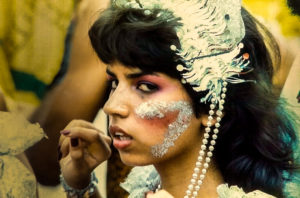
Close to forty years after wallowing in the party that was Trinidad and Tobago Carnival, it all came flooding back when I found the old photos of a glorious holiday. They were so vivid, I could see the potential in renovating them, wondering if 21st century Trinidad and Tobago Carnival costumes could be better. I could almost see the Trinidad Carnival Bands floating through the streets and hear the music blaring through the island as I went to work on the restoration.
Immersed in the Trinidad and Tobago Carnival traditions
In 1980, a friend of mine married a Trinidadian girl. Two years later they invited my wife and me to visit them in St. Johns, Port of Spain, for the 1982 version of the world-famous annual Trinidad and Tobago Carnival. We flew into the capital, Port of Spain, ten days before Carnival day itself. The day which caps the build up of parties and musical band performances that precede the big day.
We stayed with the family and became totally immersed in the Carnival traditions and atmosphere at grassroots level. From the day we arrived until the day we left the island to return to England, we were involved in every aspect of Carnival.
Tobago
We even made enough time to visit the beautiful sister island of Tobago, where a version of Robinson Crusoe was filmed. I found a massive conch shell on the beach which I lugged all the way back to England. It sat in my fireplace for years. When the fire was blazing on a cold winter’s day, I looked at the shell and remembered the fierce heat on the day when I found it.
Old Carnival Photos
When I unearthed old pre-digital photo prints, I remembered the amazing Trinidad and Tobago Carnival costumes and how beautiful they were. The photos weren’t too good after a few decades in the attic, but I dusted them off, scanned them into my PC and went to work. I used the modern post-processing technology at my disposal (mainly Lightroom and Topaz). And brought enough pictures back to life to show a glimpse of a great experience.
The History of Trinidad Carnival
18th-century French settlers brought the tradition of a pre-Lenten festival, in which they found it amusing to dress up and dance like their African slaves. The slaves found it even more amusing to use the confusion of carnival as an occasion for uprisings. Long after the slaves were emancipated by the British in 1838, the colonial administration continued to fight the now-Africanized carnival piece by piece—banning, at one time or another, drums, masks and dancing in the streets. –
SMITHSONIAN MAGAZINE
The Trinidad Carnival is a major part of Trinidadian life, which dates back to the 18th century. So much so, that no sooner has one Carnival finished than the people are planning the next one. They hold the event just before Ash Wednesday. And it usually falls in mid-February, the hot and dry time of the year.
Parties galore
A cacophony of music filled the days and nights for several weeks as Carnival day closed in. Endless rounds of house parties kicked off the celebrations. And Calypso bands practiced in readiness to compete for ‘Band of the Year’. They held televised music competitions in small venues throughout the capital, Port of Spain, some of which we went to, joining in the fun celebrations that consumed the nation.
I didn’t think about it at the time, but later I wondered how the island functioned, as no-one seemed to work, except on anything attached to the carnival itself. What about people who worked at the waterworks, the electricity board, and the banks? I never found out.
Trinidad Carnival Bands – the big day
King and Queen band members worked frantically putting the final touches to the elaborate floats and costumes. They were busy on them for months, so they would be ready to parade through the streets on the last day.
The slow procession started on the outskirts of town at three in the morning. People emerged from the many roads leading from the edges of Town to the central Queens Park. Band participants stopped periodically along the route for liquid refreshments. Because of the heat it should be water, but most drinks were alcoholic. Locals fired up barbecues and prepared food to sustain the revellers throughout the day and night.
The Winners
Some bands had many participants who danced (chipped), in colourful Trinidad and Tobago carnival costumes, through the streets. They were followed by an enormous truck of musicians and the sounds of steel pan music. This is called ‘Playing Mas’ (masquerade). Locals and tourists join one of the bands, either at the start or on the route, and follow them all the way. Each band was led by a King and Queen wearing massive costumes, sometimes with wheels to help them carry it through the streets. By the end of the day, they were on their knees with exhaustion. On Carnival Sunday, as the bands arrived one by one at Queens Park, in the town centre, judges gathered to choose the King and Queen of Carnival.
At the end of an exhausting day, everyone tried to go home. Many didn’t make it and it was not unusual to see costumed or un-costumed revellers still in the streets the next day or longer.
No one wants a great party to end too soon.
My Picture Gallery of Trinidad Carnival Costumes
The beautiful pictures in this gallery were restored from damaged old photos from the pre-digital age. To view them in full screen, just click on any photo and scroll through them.
Click here to find out how I restored them.
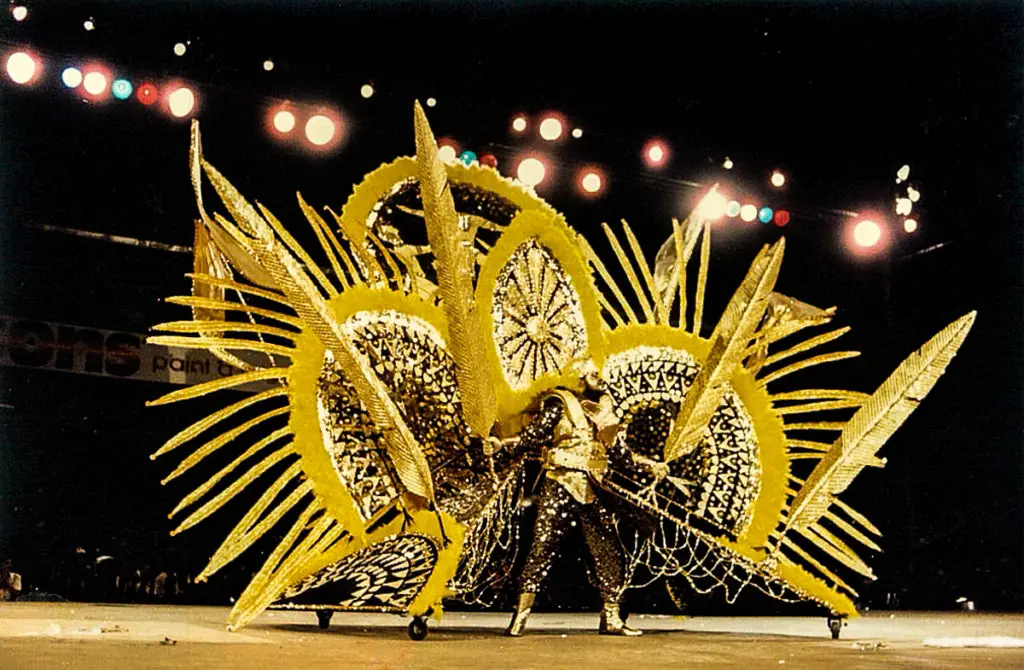

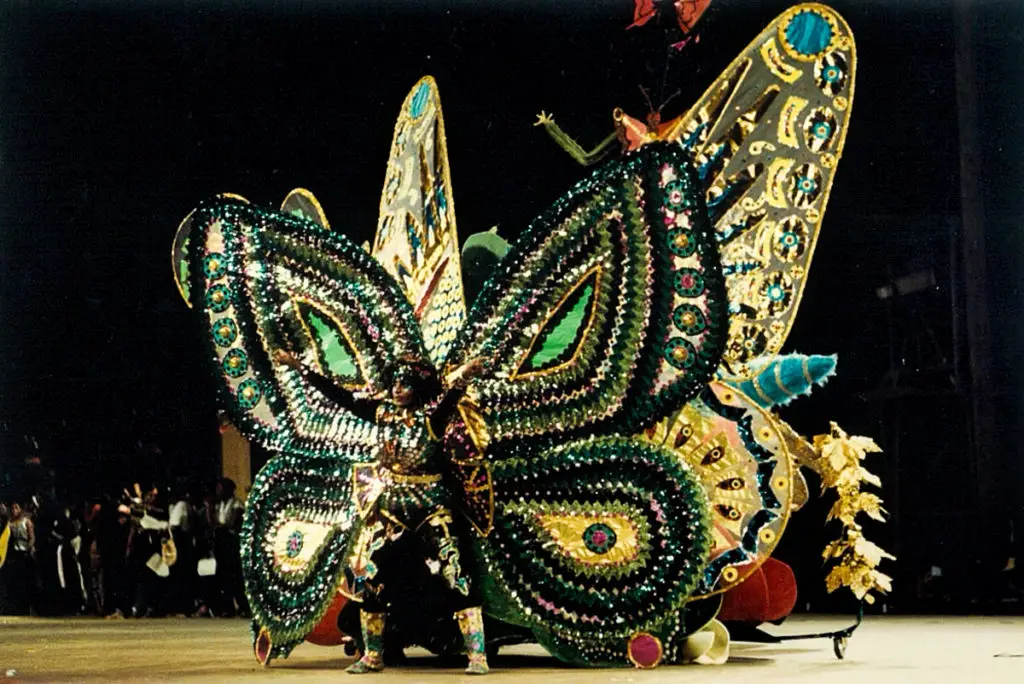
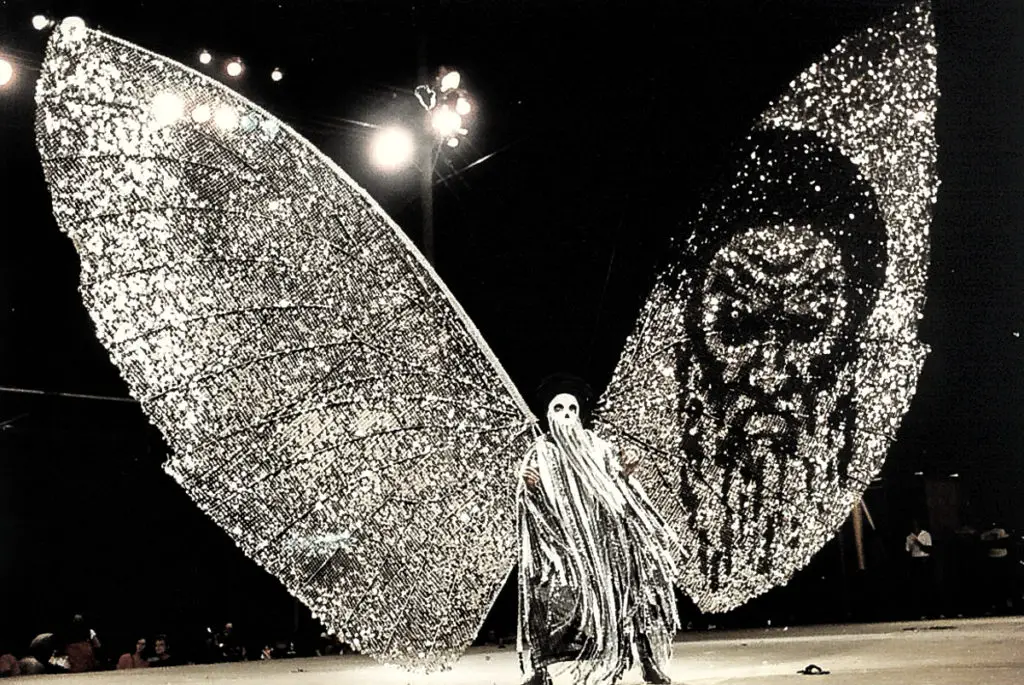
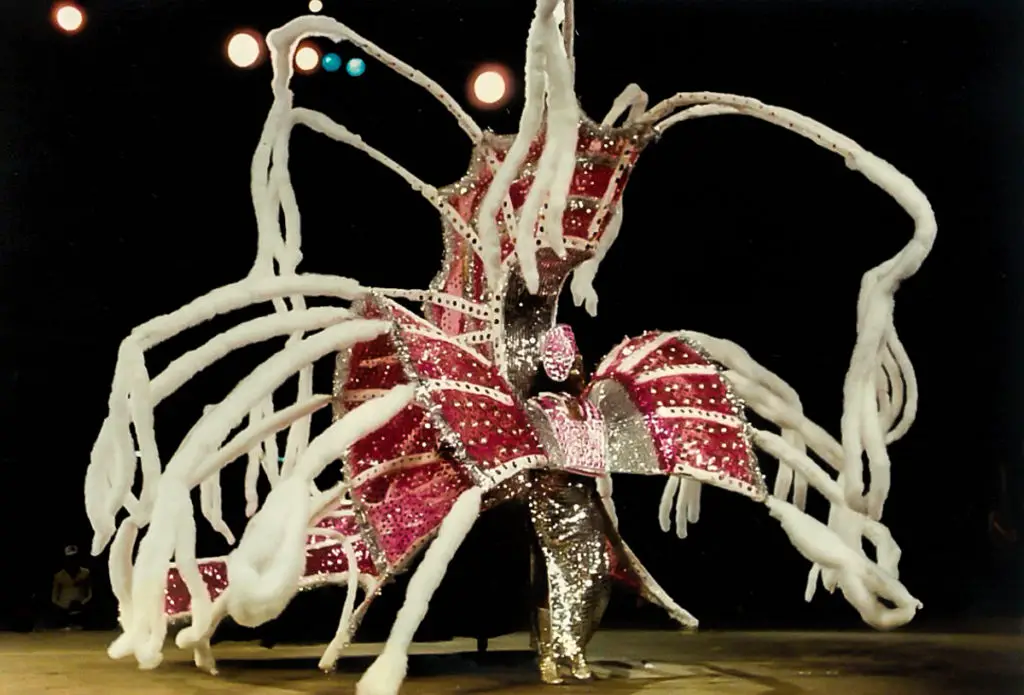
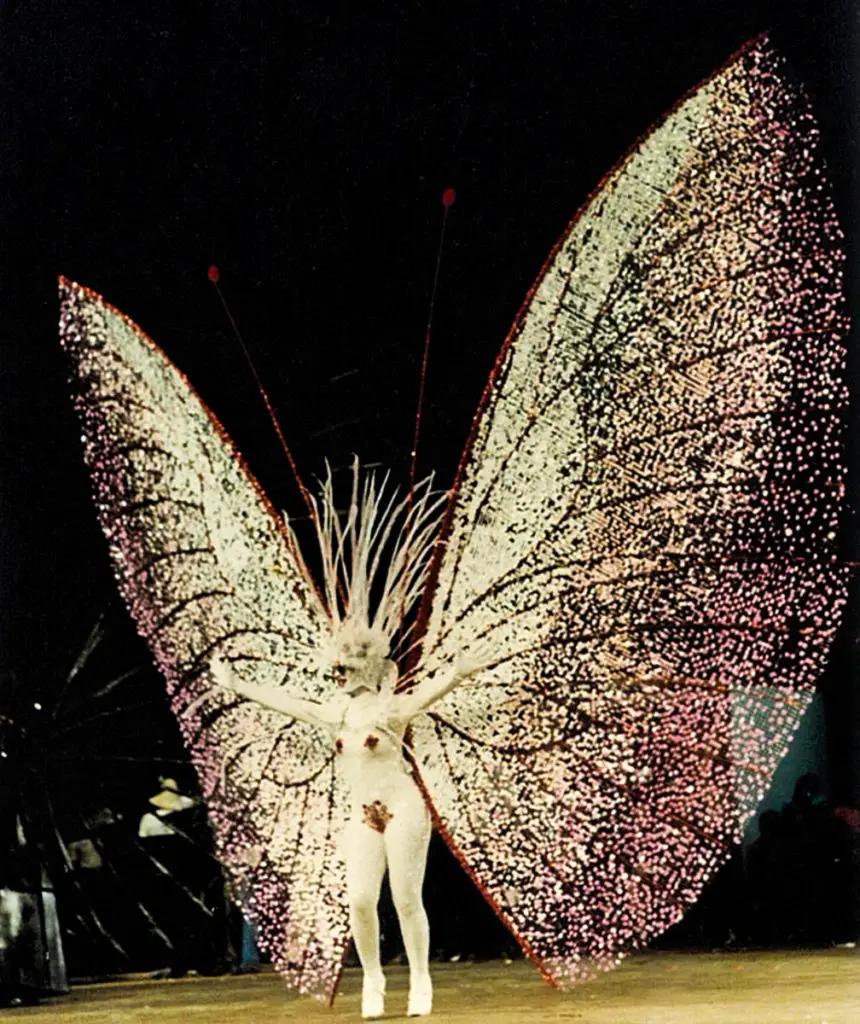
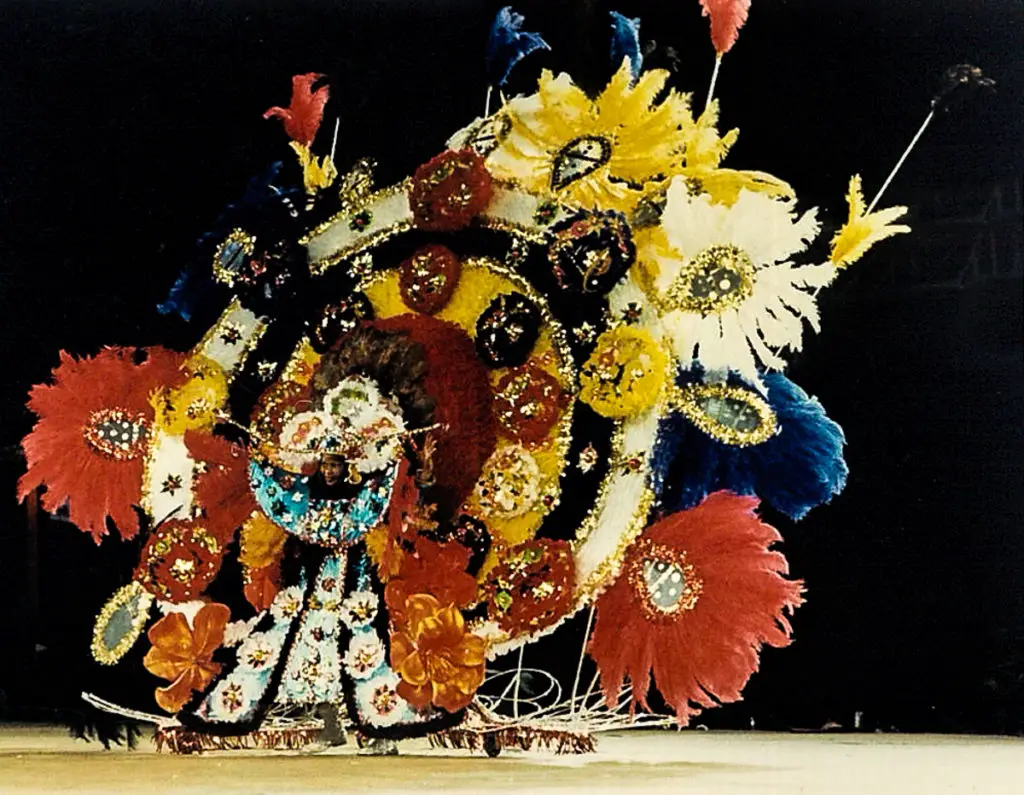
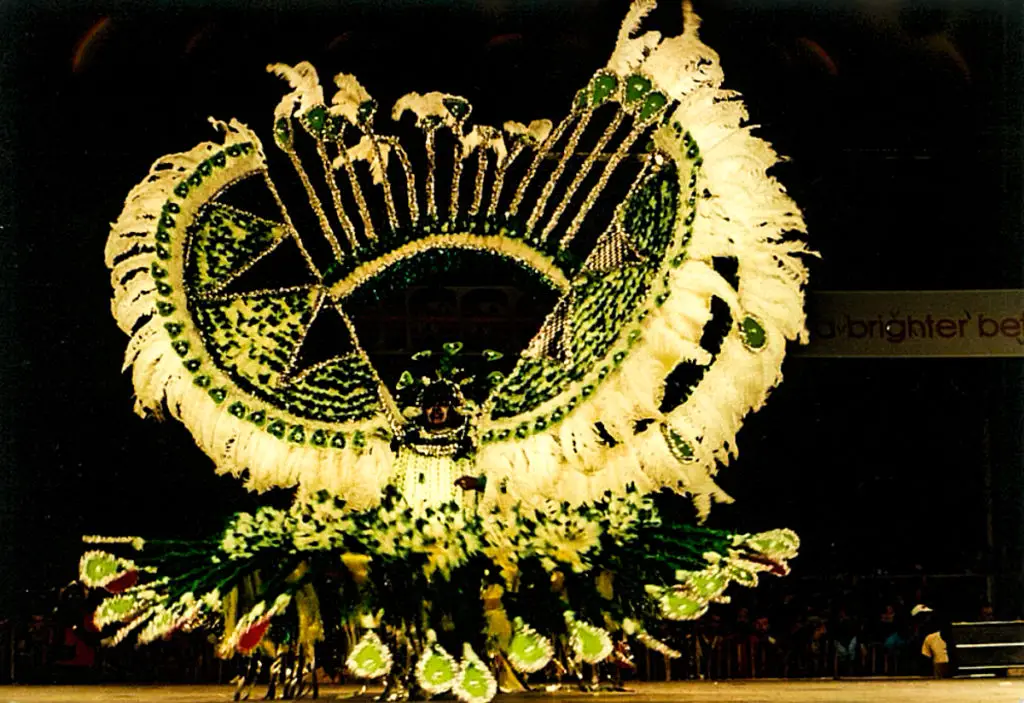
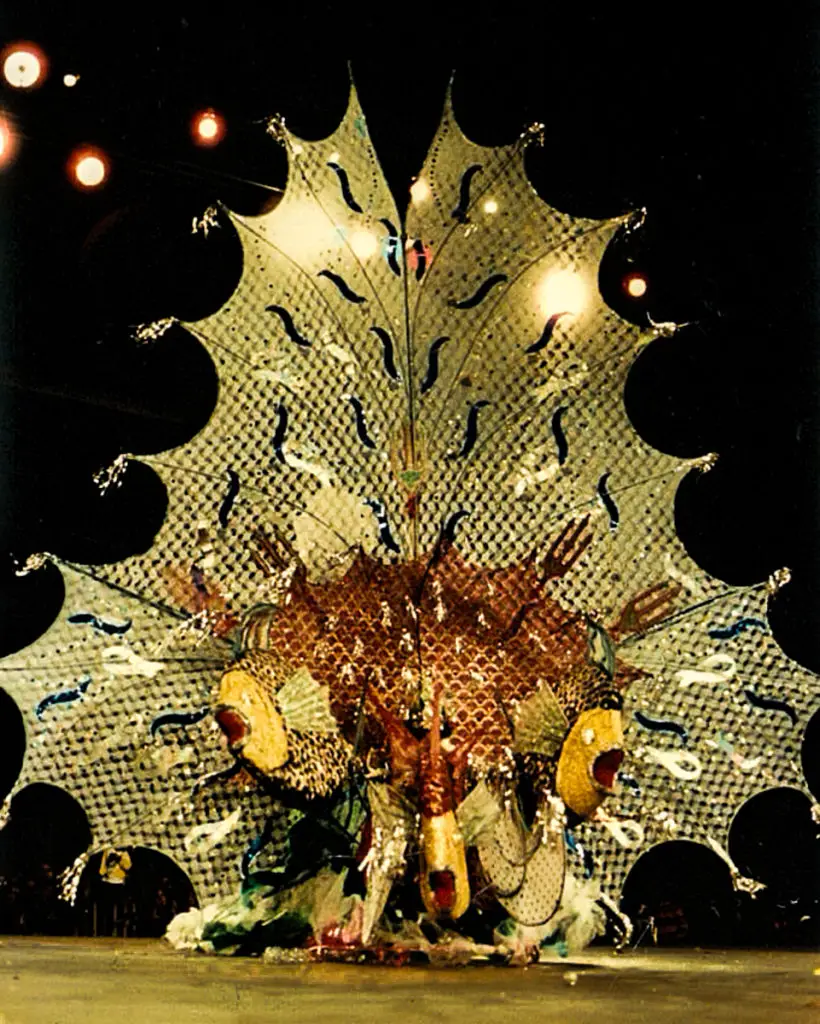
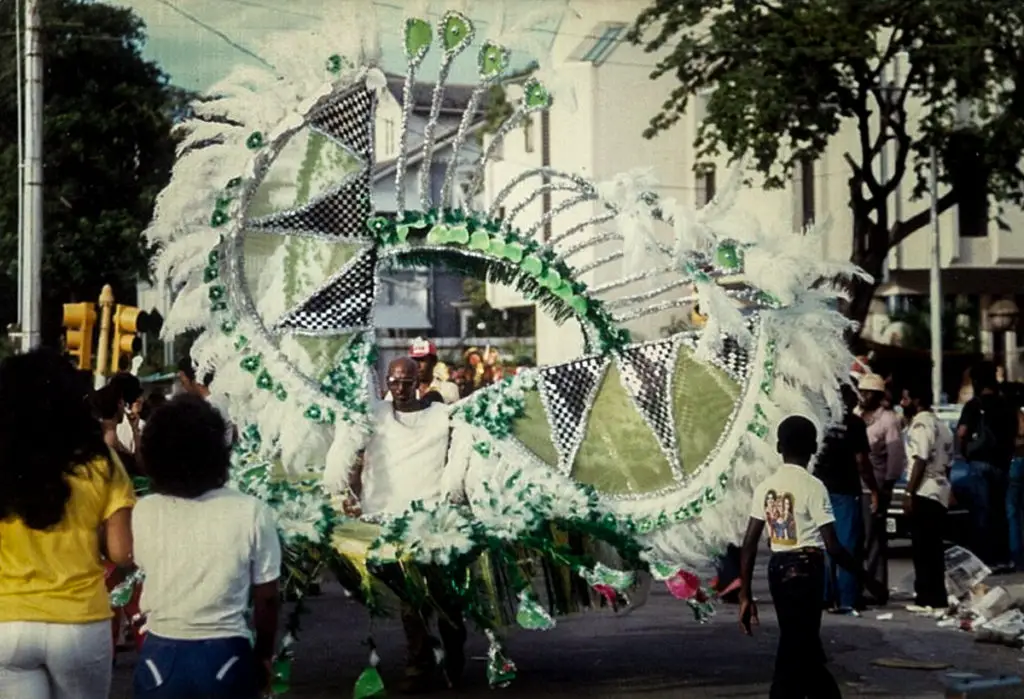
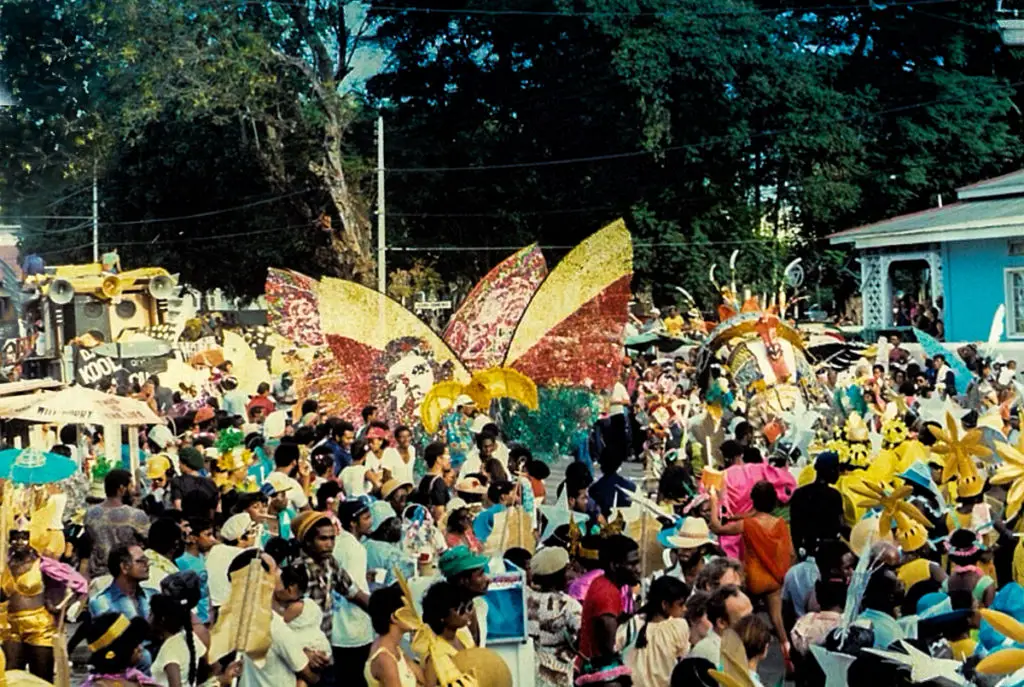
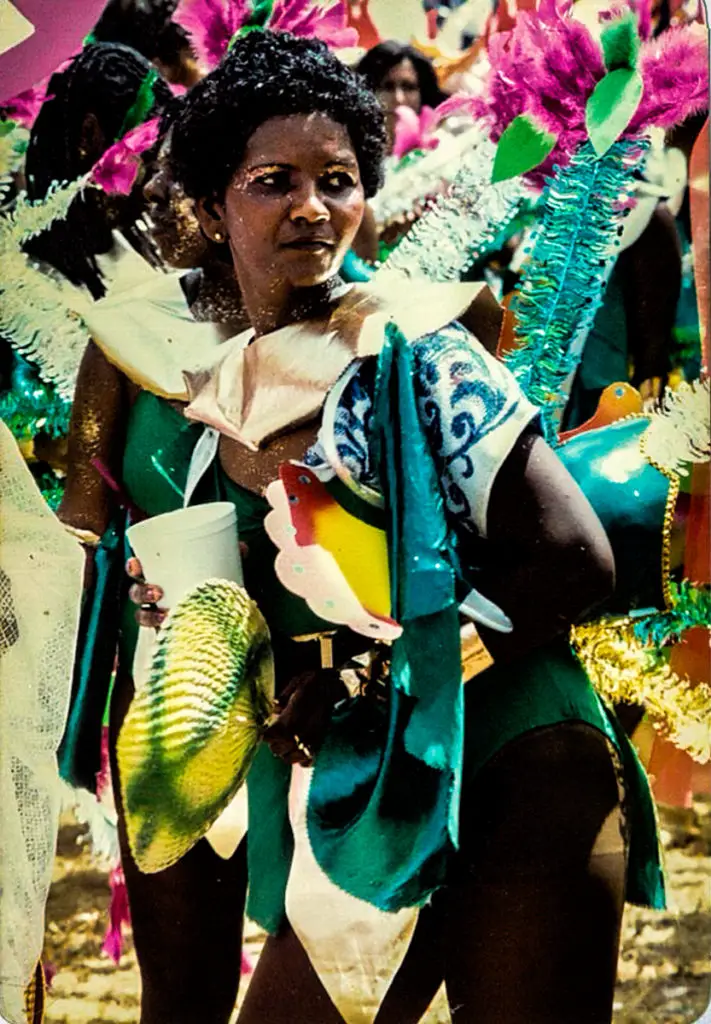
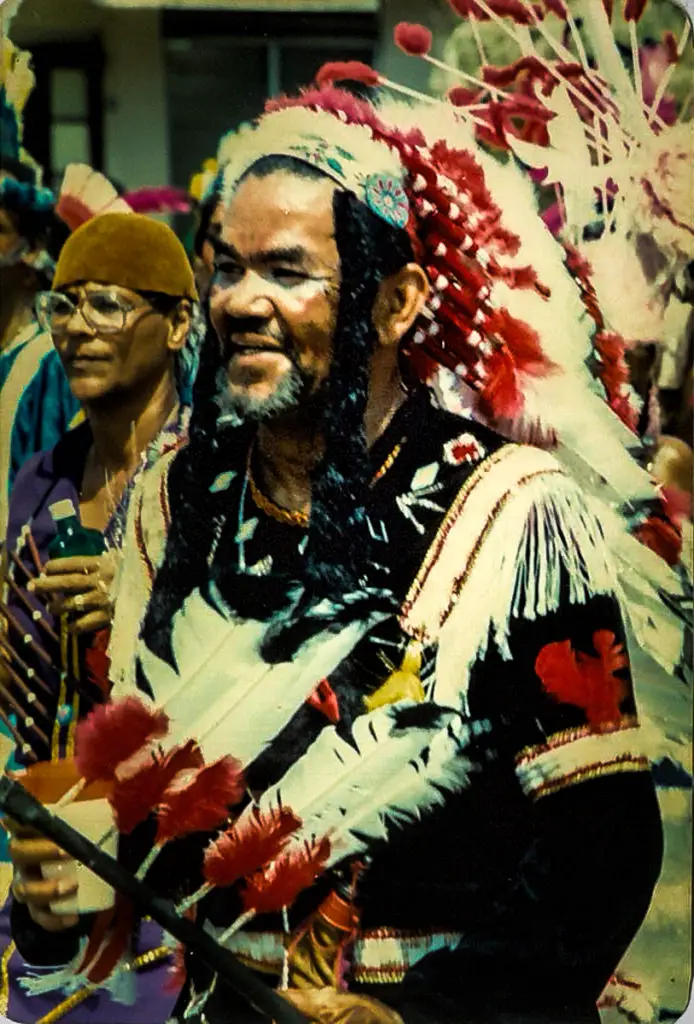
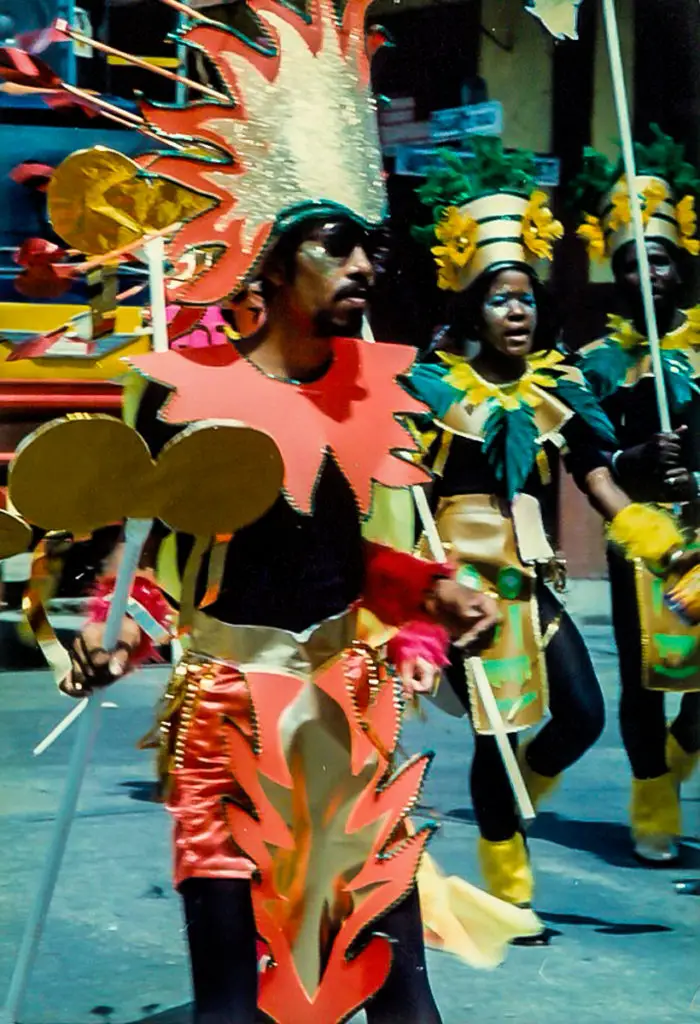
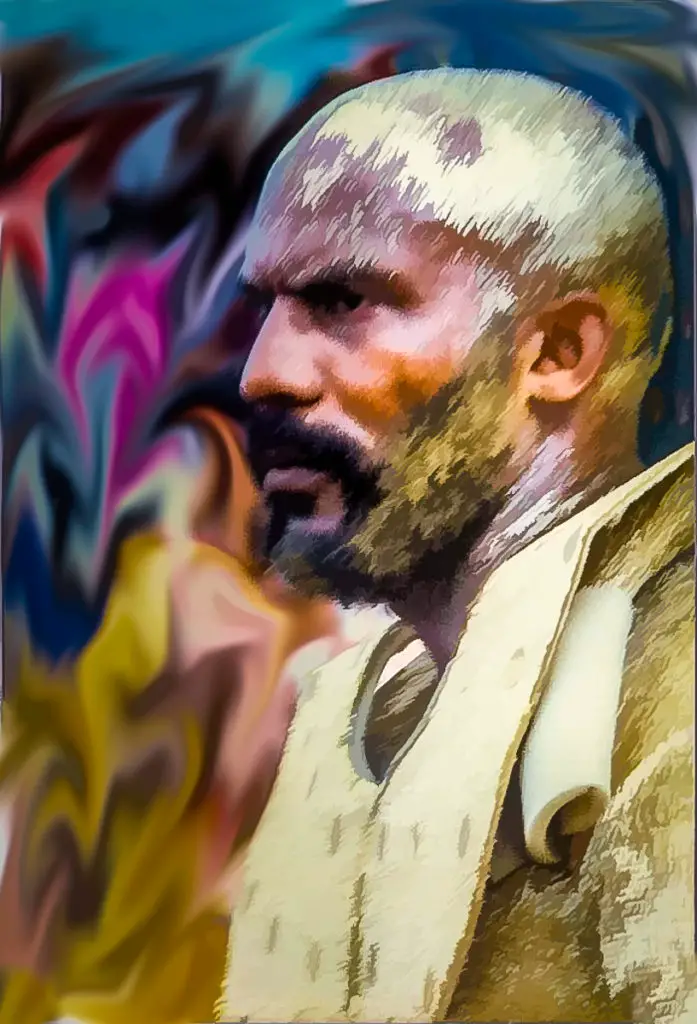
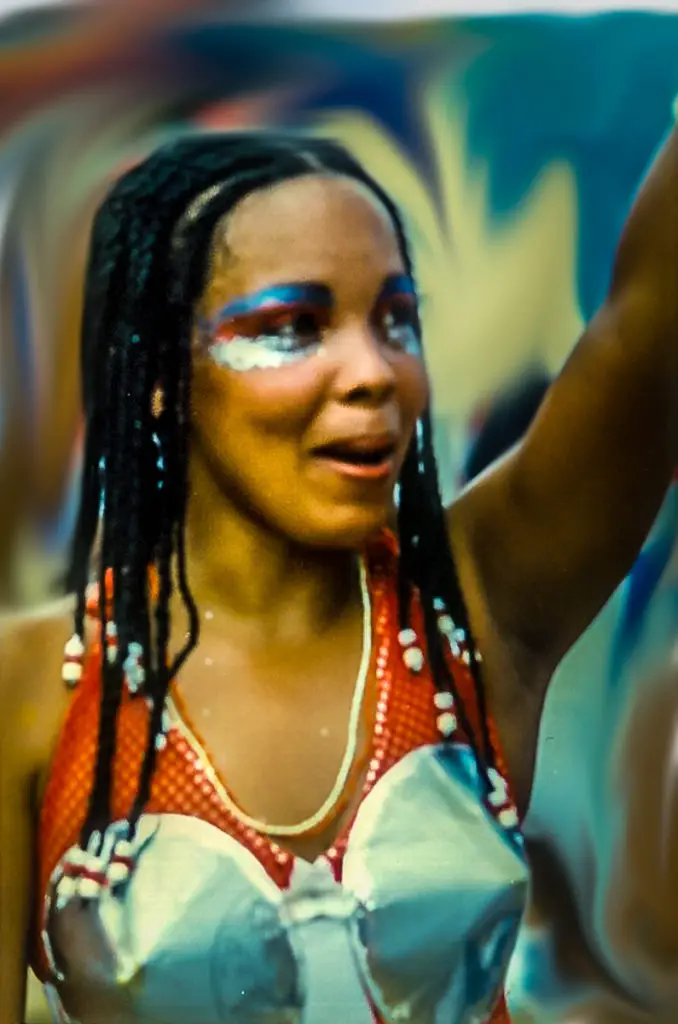
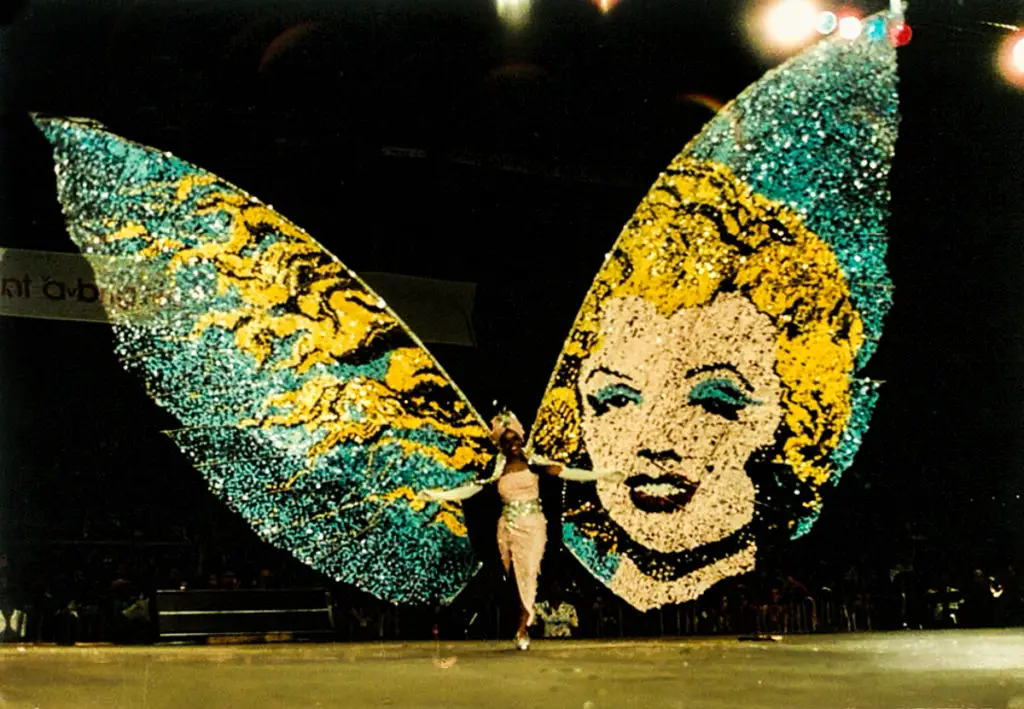
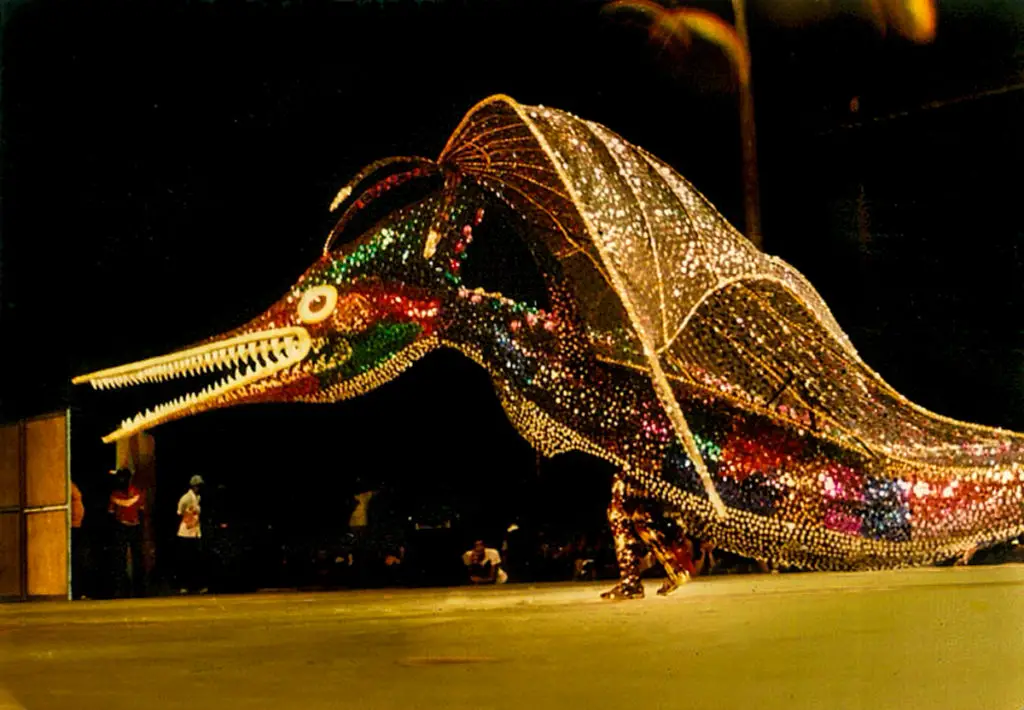
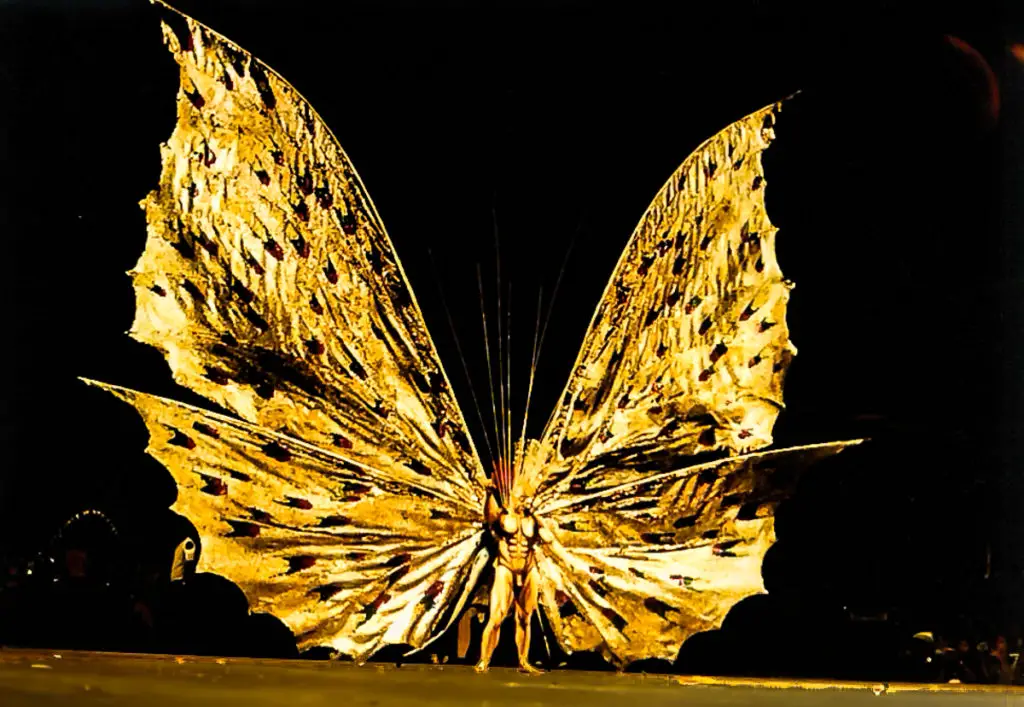
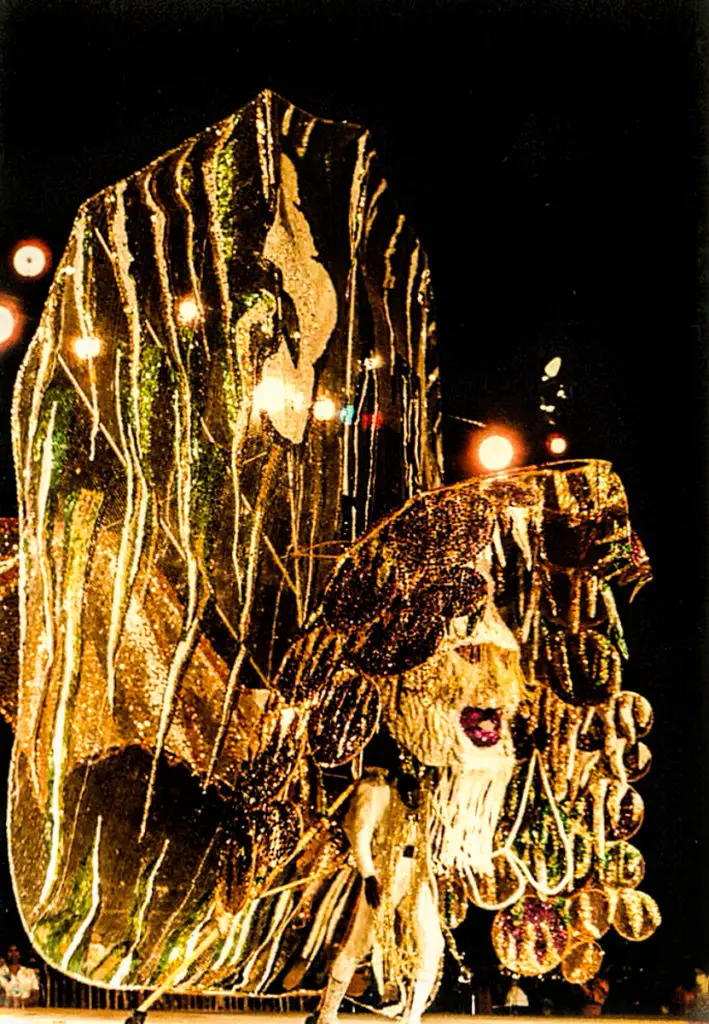
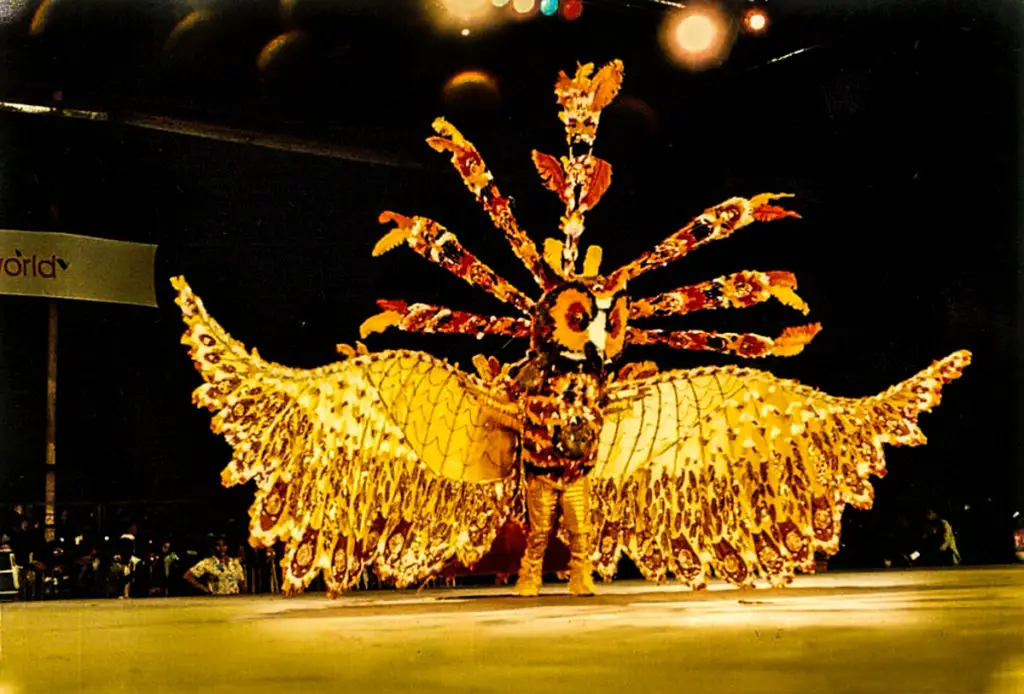
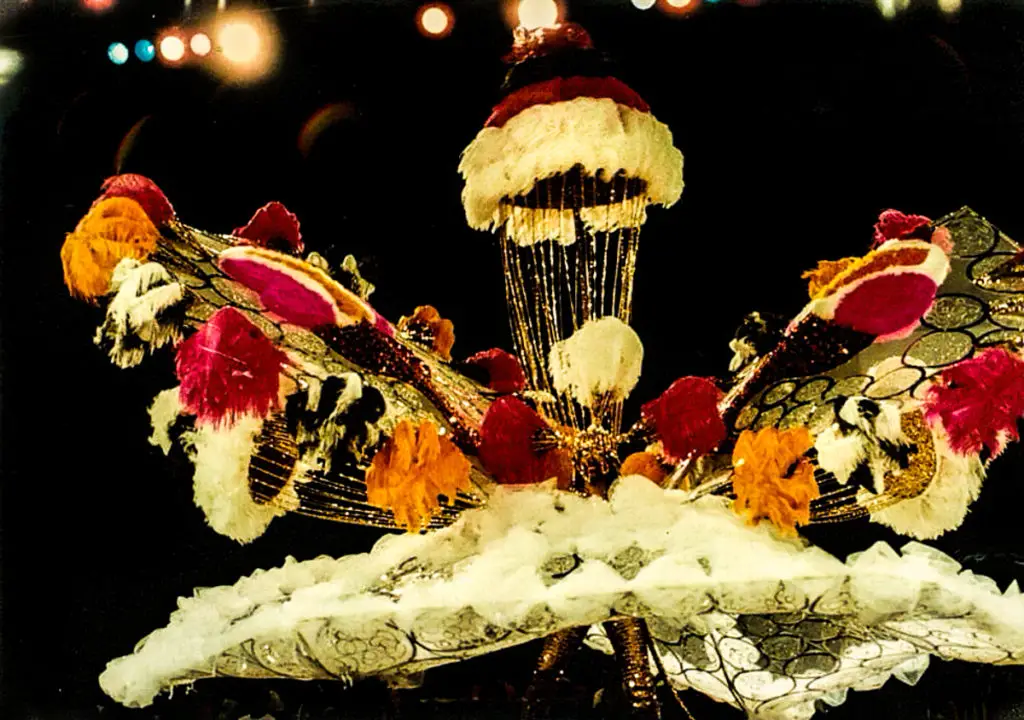
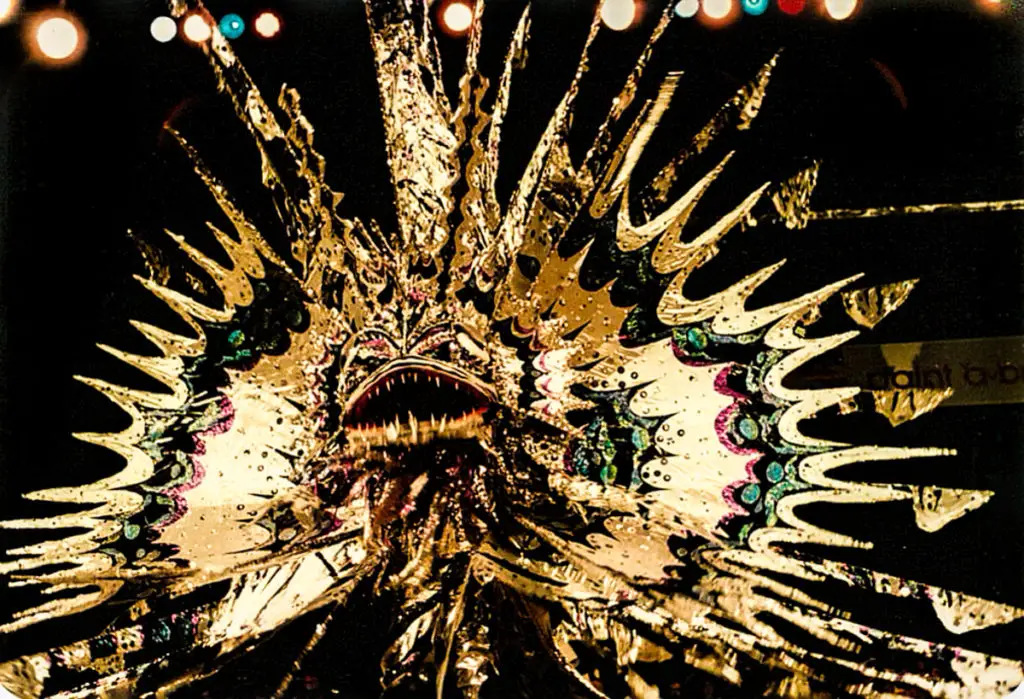
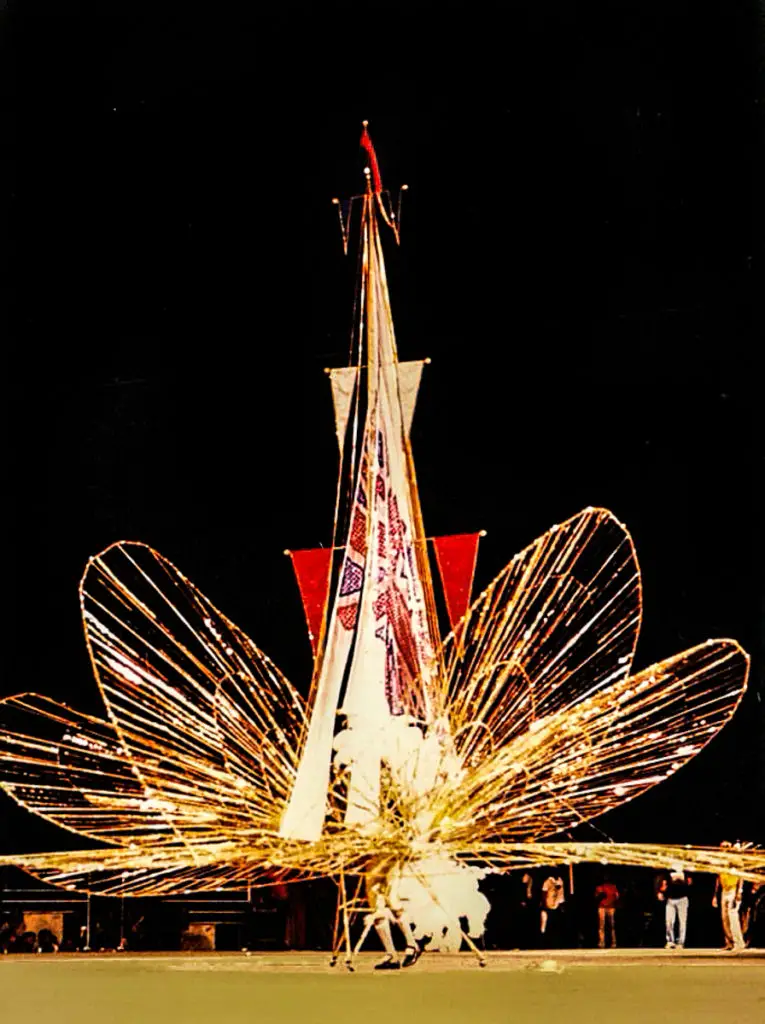
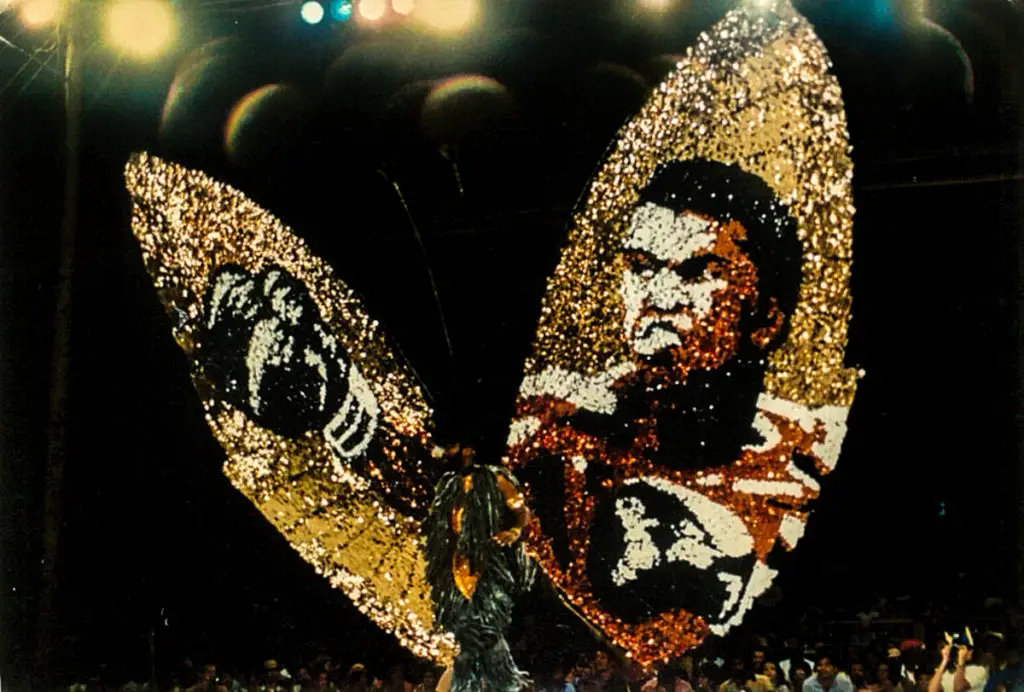
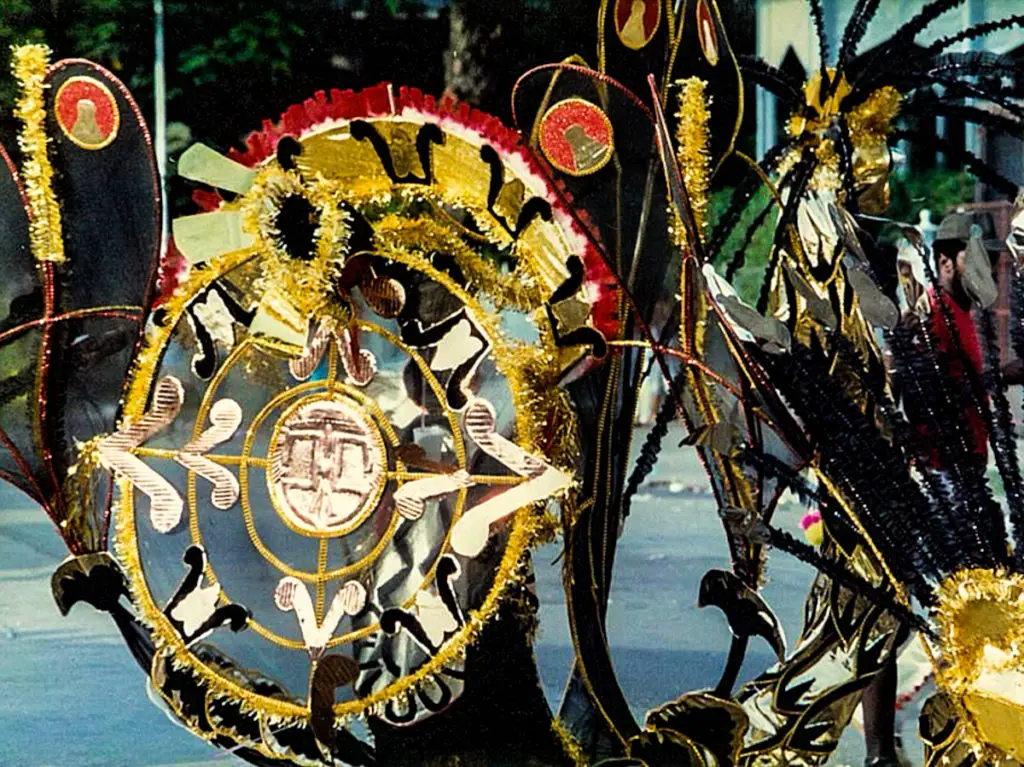


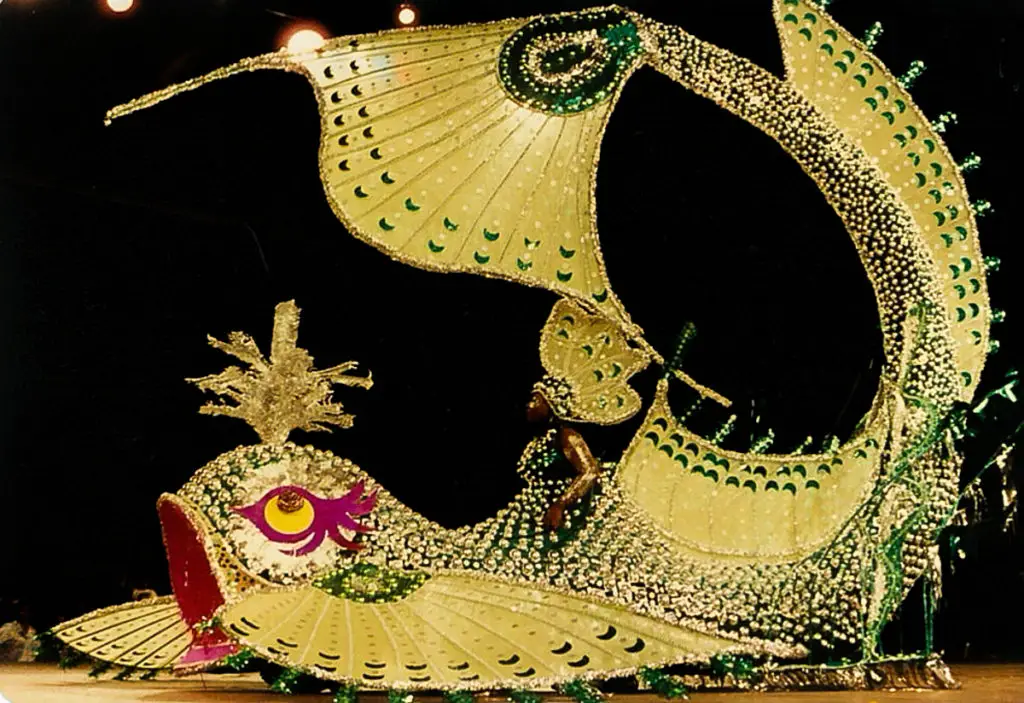
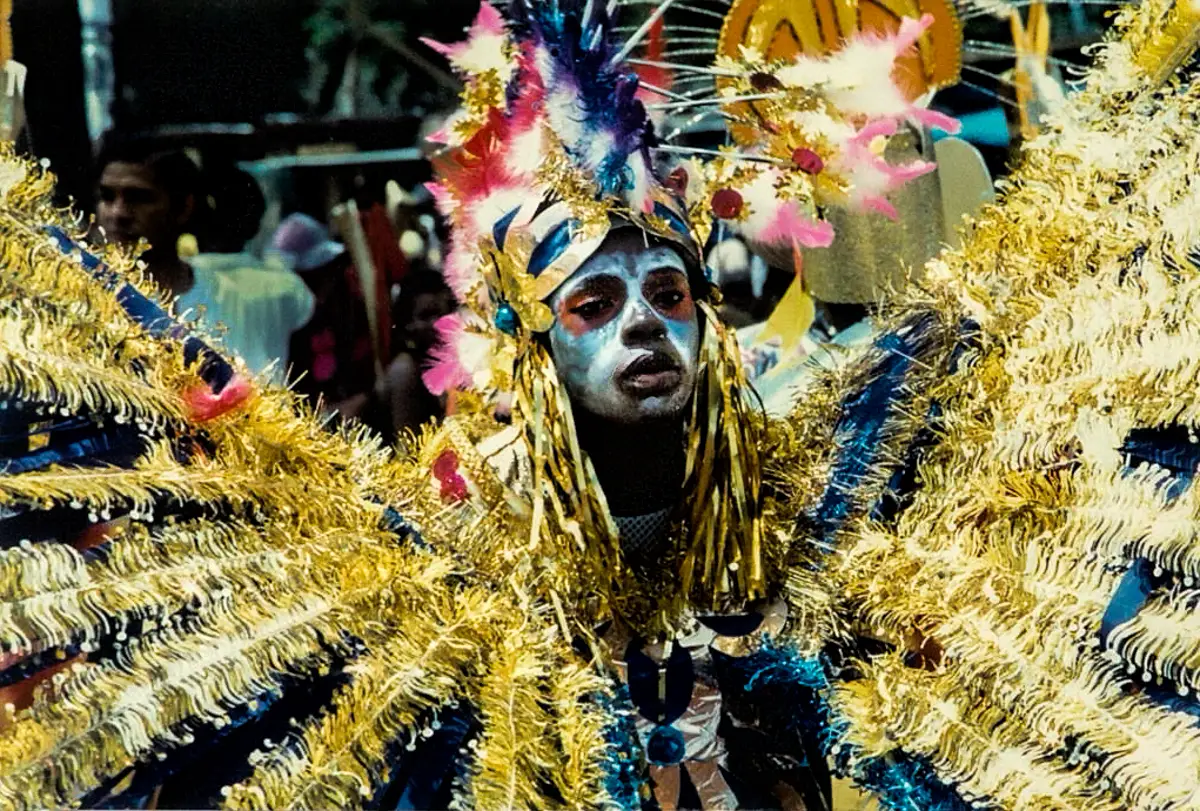
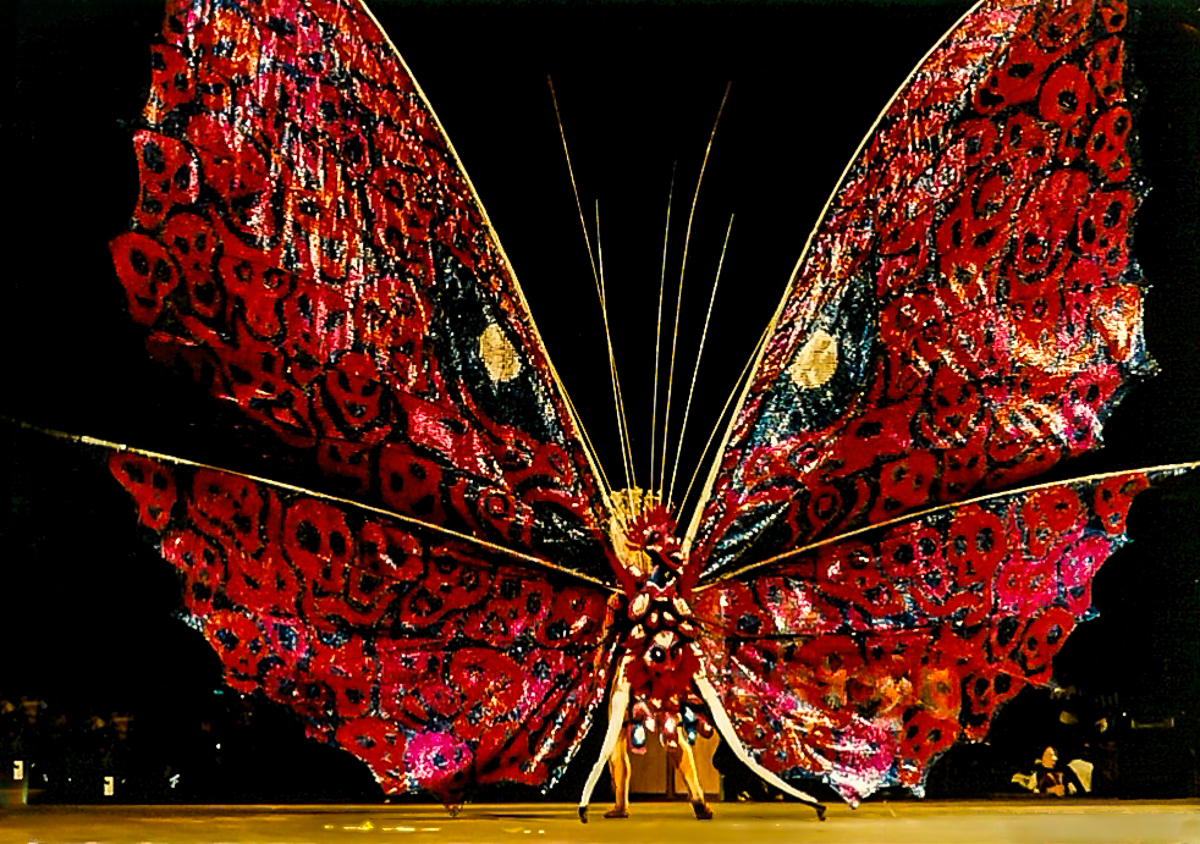

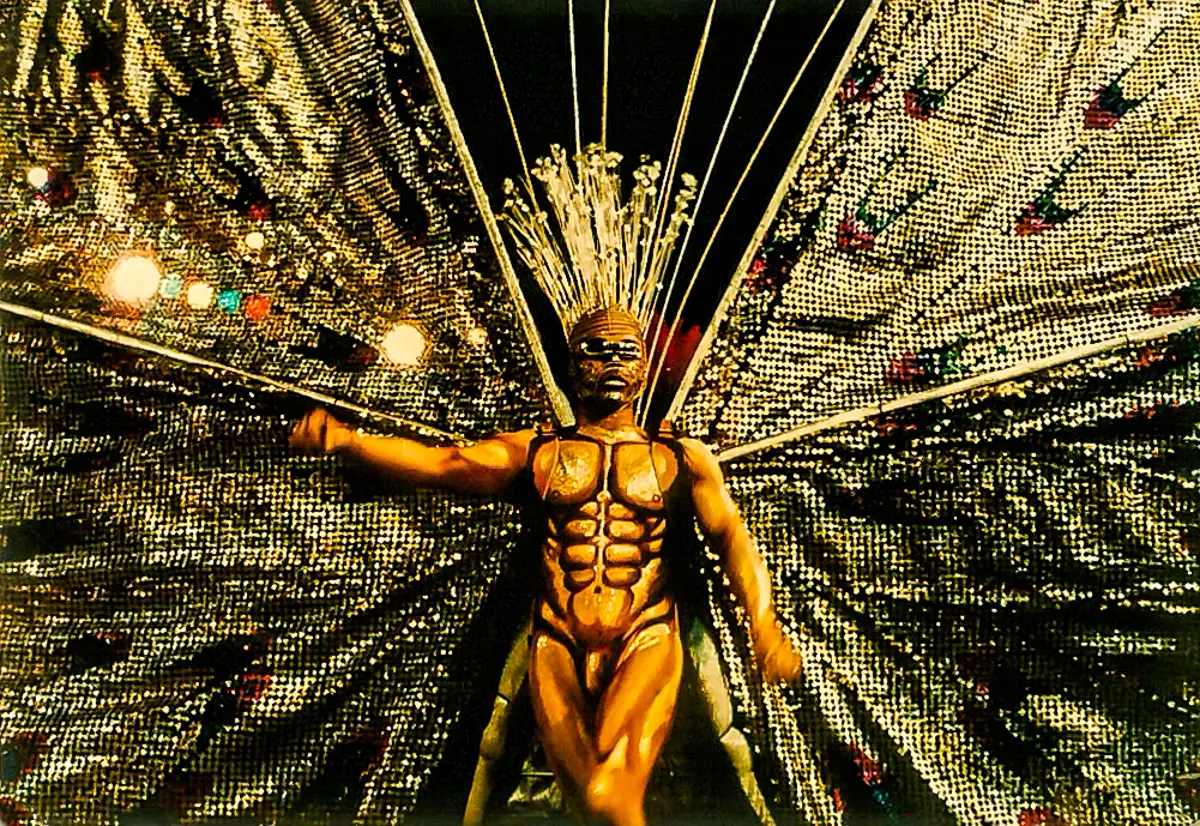
It was fabulous, and I’m sure it still is nearly 40 years on.
Wow! Looks fabulous!